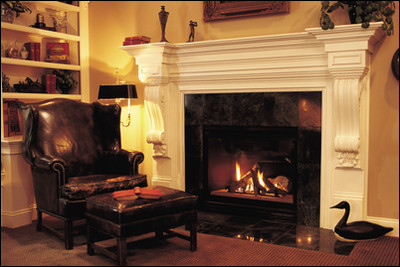With winter on its way, we’ve been plugging woodstoves and fireplaces left and right — from recommending that you light up your fireplace to dispel bad odors in your home to tweeting our chimney-cleaning how-to article. And fireplaces certainly do have many advantages: they help save on heating costs; they’re cozy places to curl up during snowstorms; they’re more environmentally friendly than heating your home with natural gas.
Right?
Maybe not. This TreeHugger.com article links to a UK study that explains that burning wood might not be as eco-friendly as we’d all like to think. The pro-biomass line argues that burning wood only releases the same amount of carbon that the wood absorbed when it was growing as a tree. Therefore, it follows that burning wood would not result in a net increase of carbon in the atmosphere. However, the new study proposes that since we need a decrease in carbon now, we might be better off not burning wood, and instead using it in other ways that don’t release any carbon (such as making wooden furniture). In addition, wood might not offer the energy security that many people think it does — on the contrary, if we keep turning towards biomass as an alternative energy solution (which is becoming a trend in many places), timber is likely to become scarce, creating shortages. According to the authors of the study, timber-dependent manufacturers are already expressing concern about potential shortages and high costs of wood.
What a tough question — and how hard it is to know the right answer. What do you think? Will you light up the woodstove home anyway this winter? Or will you put weatherstripping on your windows and doors, bundle up in sweaters, and try to use natural gas as efficiently as possible?
Credit: TreeHugger.com




























